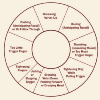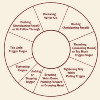killchain
Member
Hey guys,
I'm not a novice shooter, but I've got a problem lately. When I shoot my Beretta 92... I am always hitting low and to the left. Constantly. It's making me angry, because I can shoot all of my other pistols dead on.
EDIT: It's not the sights... others have shot the pistol and can shoot it fine, it's something with me.
It's got a stock trigger, and I don't mind doing some work on it... but I don't want a hair trigger and I don't have the funds to buy some Ubertriggar kit from Uzbekistan.
Can anyone give me some tips on how to work this kink out of my shooting? It would be much appreciated.
I'm not a novice shooter, but I've got a problem lately. When I shoot my Beretta 92... I am always hitting low and to the left. Constantly. It's making me angry, because I can shoot all of my other pistols dead on.
EDIT: It's not the sights... others have shot the pistol and can shoot it fine, it's something with me.
It's got a stock trigger, and I don't mind doing some work on it... but I don't want a hair trigger and I don't have the funds to buy some Ubertriggar kit from Uzbekistan.
Can anyone give me some tips on how to work this kink out of my shooting? It would be much appreciated.



